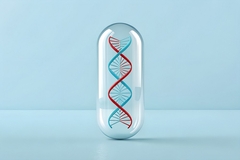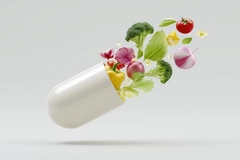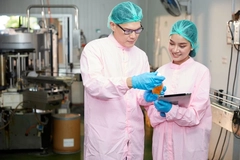Packaging Methods May Affect Microbial Spoilage of Refrigerated Beef

Beef is recognized as one of the most perishable foods, and beef spoilage is commonly attributed to high water content and abundance of surface nutrients.
18/07/06 Researchers from Italy have found that different packaging methods using air, oxygen, and carbon dioxide can have an impact on the microbial spoilage of refrigerated beef. They report their findings in the July 2006 issue of the journal Applied and Environmental Microbiology.
Beef is recognized as one of the most perishable foods, and beef spoilage is commonly attributed to high water content and abundance of surface nutrients. Oxidation and color change are two obvious physical changes that occur when meat goes bad, and the growth of potentially harmful microorganisms has prompted researchers to examine new packaging methods to minimize microbial spoilage.
In the study, beef was packaged using three different methods of modified-atmosphere packaging (MAP) and stored at 5 degrees Celsius for fourteen days. The first method consisted of air (MAP1), the second of 60% oxygen and 40% carbon dioxide (MAP2), and the third of 20% oxygen and 40% carbon dioxide (MAP3). While stored, the beef was monitored for viable counts of Pseudomonas, Enterobacteriaceae, Brochothrix thermosphacta, and lactic acid bacteria, as well as headspace gas composition, weight loss, and color change. During the first seven days, packaging method MAP2 was shown to offer the best protection, maintaining acceptable microbial loads and color change. Spoilage did occur between seven and fourteen days and although many different genera and species were identified, some were found more frequently and appeared to vary according to packaging conditions.
Rahnella aquatilis, Rahnella spp., Pseudomonas spp., and Carnobacterium divergens were prominent in the air packaging method; Pseudomonas spp. and Lactobacillus sakei were found in packaging high in oxygen content; and Rahnella spp. and L. sakei were the main species identified during carbon dioxide storage.
"As far as we know, this is the first study to report the changes of spoilage-related microbial flora during storage of fresh meat," say the researchers. "The assessment of microbial species diversity occurring in meat during storage and the study of the response and adaptability of the species to different antimicrobial conditions will be fundamental for improving and implementing packaging systems aimed a prolonging the shelf life of meat products."












